
Explore & Play
Discover interesting topics and solve the accompanying crossword puzzle.
Vegetable Crossword: 10 Fascinating Facts and Tips About Vegetables
Table of Contents
Vegetable crossword
You can either fill in the crossword puzzle directly on this page or click the button in the bottom right corner to print it for free.
——————————————
10 Fascinating Facts and Tips About Vegetables You Should Know
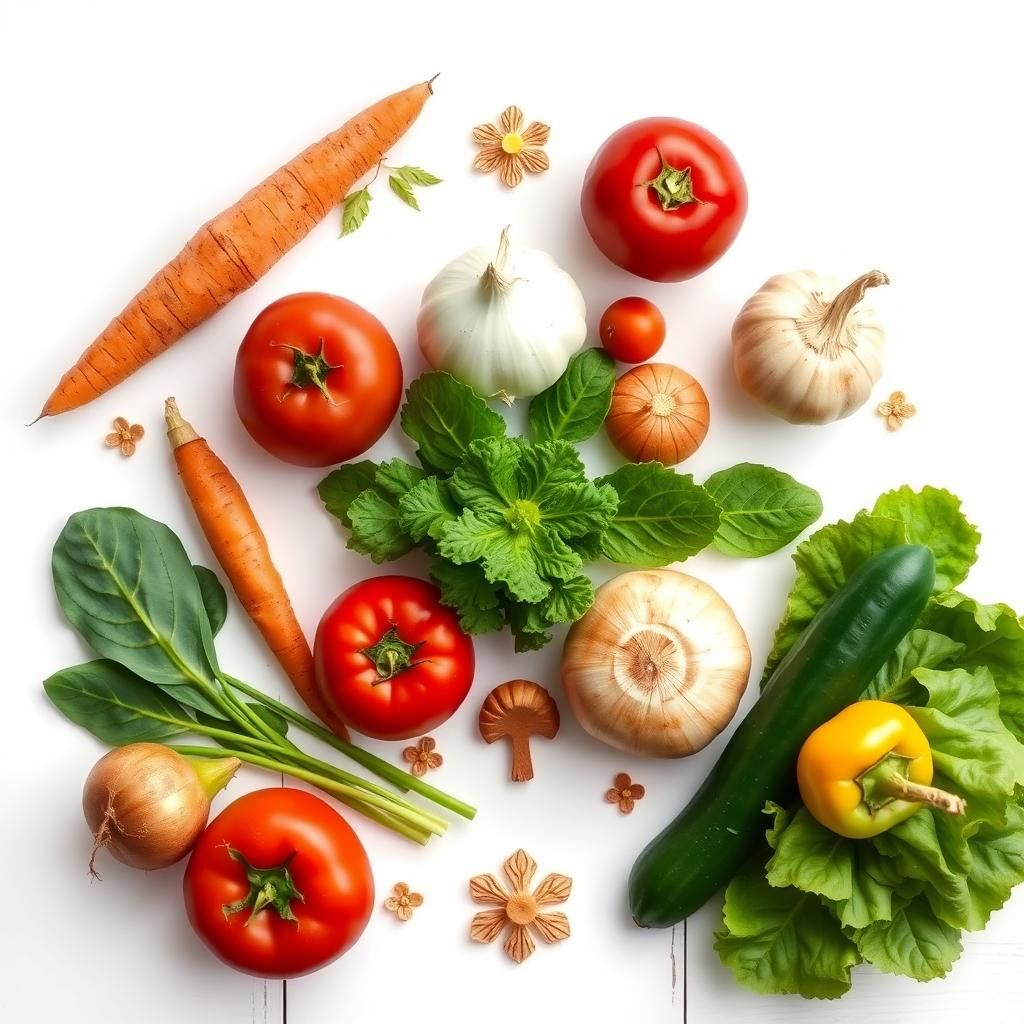
There’s a certain comfort in knowing that vegetables aren’t just dinner plate fillers, but the quiet heroes of our health. Picture a crisp carrot pulled fresh from the earth, still holding the warm scent of soil and sunshine—this is more than food; it’s nature’s promise in a bite. Vegetables nourish us in ways that stretch beyond vitamins and minerals. They connect us to the rhythms of the seasons, to the hands that tend the soil, and to the simple joy of a meal made from scratch.
In this article, we’ll walk through some fascinating facts about ten beloved vegetables—the humble carrot, trusty potato, pungent garlic, and friends like onion, tomato, broccoli, spinach, cucumber, lettuce, and pepper. You’ll discover tidbits that might surprise you, along with health benefits that make these vegetables so much more than just tasty additions to your meals. And because knowing how to grow and store your vegetables can deepen that connection, we’ll share practical tips that bring rustic gardening and kitchen wisdom right to your own table.
So whether you’re tending a backyard patch or simply aiming to eat a little greener and live a little healthier, join me on this easy stroll through the world of vegetables. It’s about finding delight in the everyday, and maybe even sparking a new habit that leaves you feeling nourished, grounded, and a little closer to the land.

1. Surprising Origins and Fun Facts About Vegetables
There’s a quiet sort of magic in vegetables when you dig a little beneath the surface—literally and figuratively. Take carrots, for instance. Most of us picture them as a bright, cheerful orange, but long before this familiar hue, carrots marched through history in shades of deep purple and even creamy white. It wasn’t until Dutch farmers in the 17th century quietly bred the orange variety as a tribute to the House of Orange that the carrot found its signature color. So, the humble carrot carries a story as rich and rooted as the soil it grows in.
Then there’s broccoli—often overlooked as just another side dish, but don’t be fooled. This green gem packs more protein per serving than a slice of steak. It’s a powerhouse hiding in plain sight, especially in its raw form where those cancer-fighting compounds concentrate in the little florets you might’ve once tossed aside. Next time you steam or snack on broccoli, remember you’re eating a garden warrior with more muscle than you’d expect.
And here’s a sprinkle of other vegetable tales to keep your curiosity whetted: Did you know that potatoes, those sturdy tubers, were once considered so strange in Europe that people thought they caused leprosy? Or that an onion’s layers aren’t just a metaphor—they’re real stories waiting to be peeled back, each one offering a new burst of flavor and tears. Even tomatoes, often debated as fruit or vegetable, carry a legacy from South America’s sun-soaked lands, where they’ve nourished communities far longer than supermarket shelves have held them.
These small revelations are a warm reminder: vegetables aren’t just food. They’re living history, packed with flavors, colors, and stories that stretch back far beyond your dinner plate. Knowing a bit about their origins makes each bite feel like a quiet celebration—rooted in time, nature, and hands that tended the earth long ago.
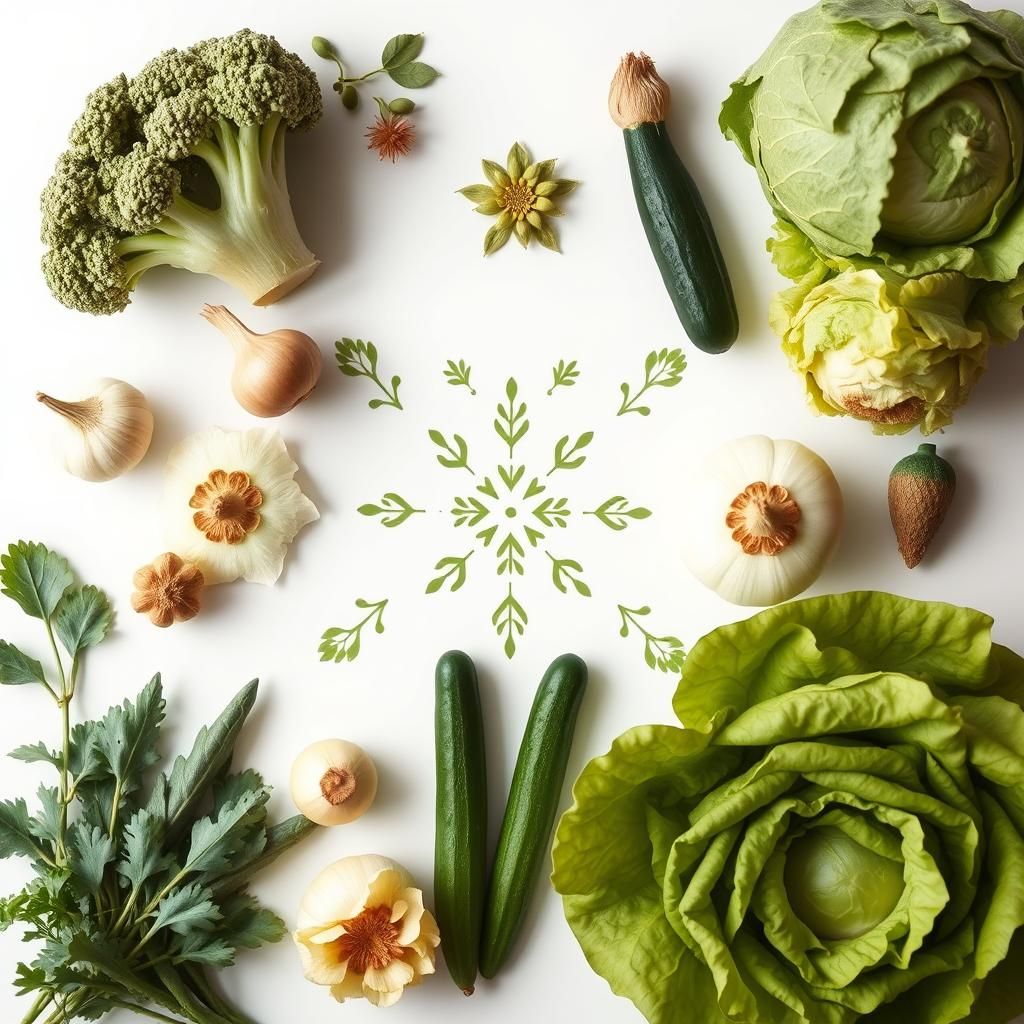
2. Health Benefits of Popular Vegetables
There’s something quietly powerful about the vegetables we often take for granted. They’re more than just colorful additions to our plates—they’re little bundles of health, each with its own story to tell.
Broccoli: Nutrient-Dense and Cancer-Fighting
Broccoli is a humble green that packs a punch. It’s rich in compounds like sulforaphane, known to help fight certain cancers. Eating it raw keeps these cancer-fighting warriors at their strongest, especially in the tight little florets. Think of broccoli as your body’s gentle guardian, ready to stand up when you need it most. A handful tossed into a fresh salad or lightly steamed with a squeeze of lemon brings out its best, vibrant spirit.
Garlic: Heart Health and Cholesterol Support
Garlic has long been a kitchen staple, but it’s more than just a flavor booster. Studies have shown it supports heart health by helping to lower cholesterol and maintain healthy blood pressure. When you crush a clove, that telltale aroma is the sign of allicin waking up—a compound credited with these protective benefits. Cooking softens its sting but doesn’t steal its goodness. Think of garlic as a quiet sentinel in your meals, keeping your heart steady without fuss.
Onions: Vitamins and Antioxidants
Onions are the unsung heroes of nutrition, brimming with vitamin C, B6, potassium, and antioxidants. They offer a gentle boost to heart and bone health, making them more than just a cooking base. That familiar sharpness when you chop onions hints at their active compounds working behind the scenes. Whether caramelized low and slow or added fresh to a salad, onions bring warmth along with wellness.
Cucumbers: Hydration and Bone Support
On a hot day, biting into a cool cucumber is like sipping a fresh stream. These crisp vegetables are mostly water—around 95%—making them perfect for keeping hydrated and refreshed. Beyond quenching thirst, cucumbers deliver vitamin K, which quietly supports your bones and helps manage blood sugar. It’s nature’s gentle way of saying, “Here’s a drink and a little care for your body.” Slice them thin in summer dishes or crunch on them raw for a simple health boost.
Lettuce: Antioxidants and Vitamin K
Lettuce isn’t just a crunchy filler; it’s a subtle source of antioxidants that help protect cells and vitamin K, crucial for bone health and blood clotting. A bed of fresh lettuce creates a soft, green canvas for other flavors—a reminder that health often hides in the simple things. Next time you build a salad or sandwich, think of lettuce as the gentle foundation that keeps your body strong and steady.
These vegetables offer more than meets the eye—they’re humble allies in everyday health, bridging the gap between the soil and our well-being. Embracing them means welcoming a little country wisdom into your daily life, one bite at a time.
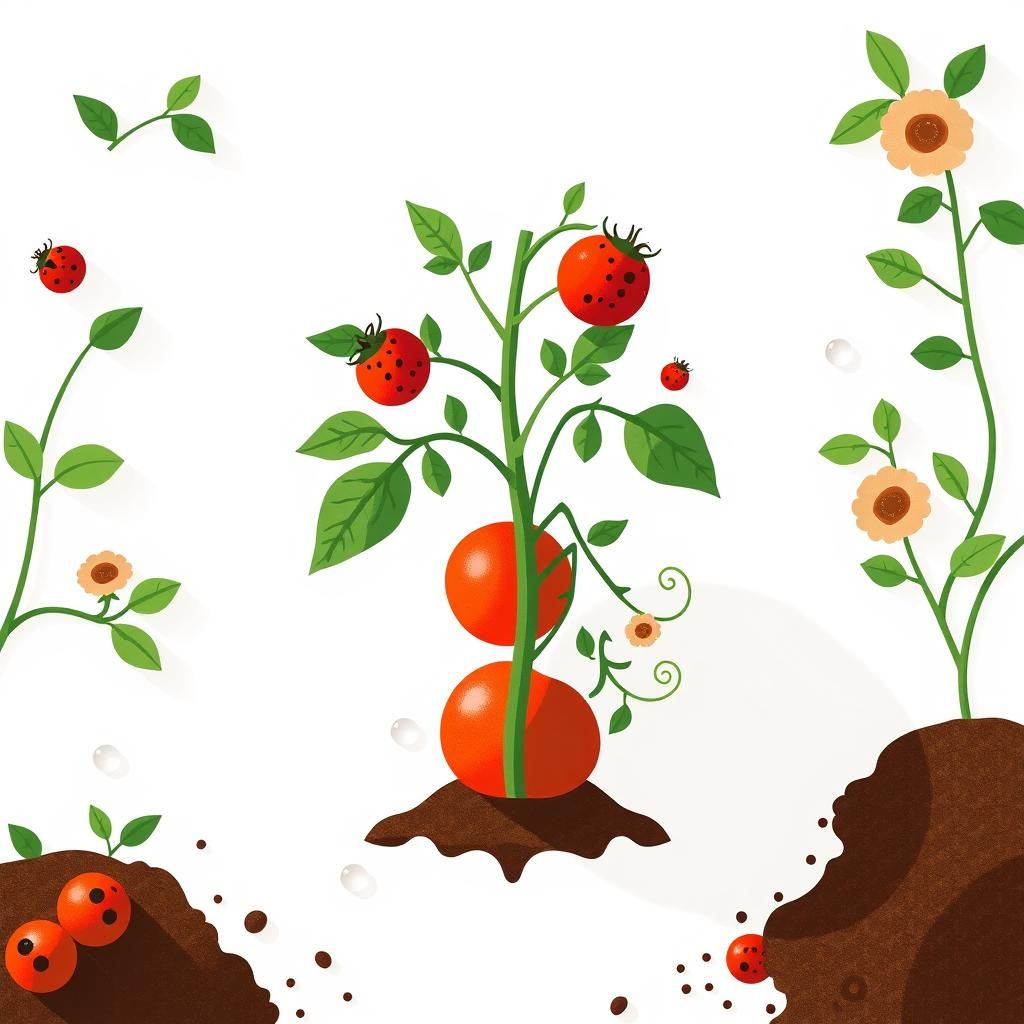
3. Growing Your Own Vegetables: Tips for Success
There’s something quietly satisfying about stepping out to your garden, fingers still earthy, to pick a ripe tomato or a handful of fresh spinach. Growing your own vegetables isn’t just about food — it’s a small ritual that connects you to the rhythm of nature, the changing seasons, and the patience those green shoots demand.
Take tomatoes, for example. They reward you with juicy, sun-warmed fruits that taste like summer itself. To get the best out of them, make sure you plant them in a spot that catches plenty of sunshine. Tomatoes love warmth, but they also appreciate steady moisture. Water deeply once or twice a week rather than a daily sprinkle — this encourages roots to grow strong and keeps plants happy. Don’t forget to pinch off the little yellow flowers that focus energy on leafy growth early on, so when the fruits do come, they’re full and robust.
Spinach, on the other hand, thrives as autumn tiptoes in and the mornings carry a touch of frost. It’s a hardy little green that rewards a bit of overseeding — that’s scattering extra seeds to fill in any gaps and keep your patch lush. Once seedlings appear, thinning is key: gently pull out weaker plants so the stronger ones have room to breathe and grow. This simple step helps spinach leaves stay big, tender, and full of that deep, earthy flavor that reminds you of a crisp fall day.
Behind these individual tips lie a few universal truths for a thriving vegetable garden: start with soil that’s loose, rich, and full of life. Compost is your best friend — it’s the slow-release magic that feeds plants through every stage. Water consistently but wisely; soggy roots can invite trouble, while dry soil leaves veggies thirsty and stubborn. Keep an eye out for pests, but welcome beneficial insects like ladybugs who quietly patrol your plants, keeping things balanced.
Gardening is not about perfection. It’s about rolling up your sleeves, learning the language of the land, and savoring each small victory — a bloom, a harvest, or simply the wonder of green life under your care. So whether you have a sprawling backyard or a humble windowsill, growing your own vegetables is a gentle invitation to slow down and savor the season’s gifts.
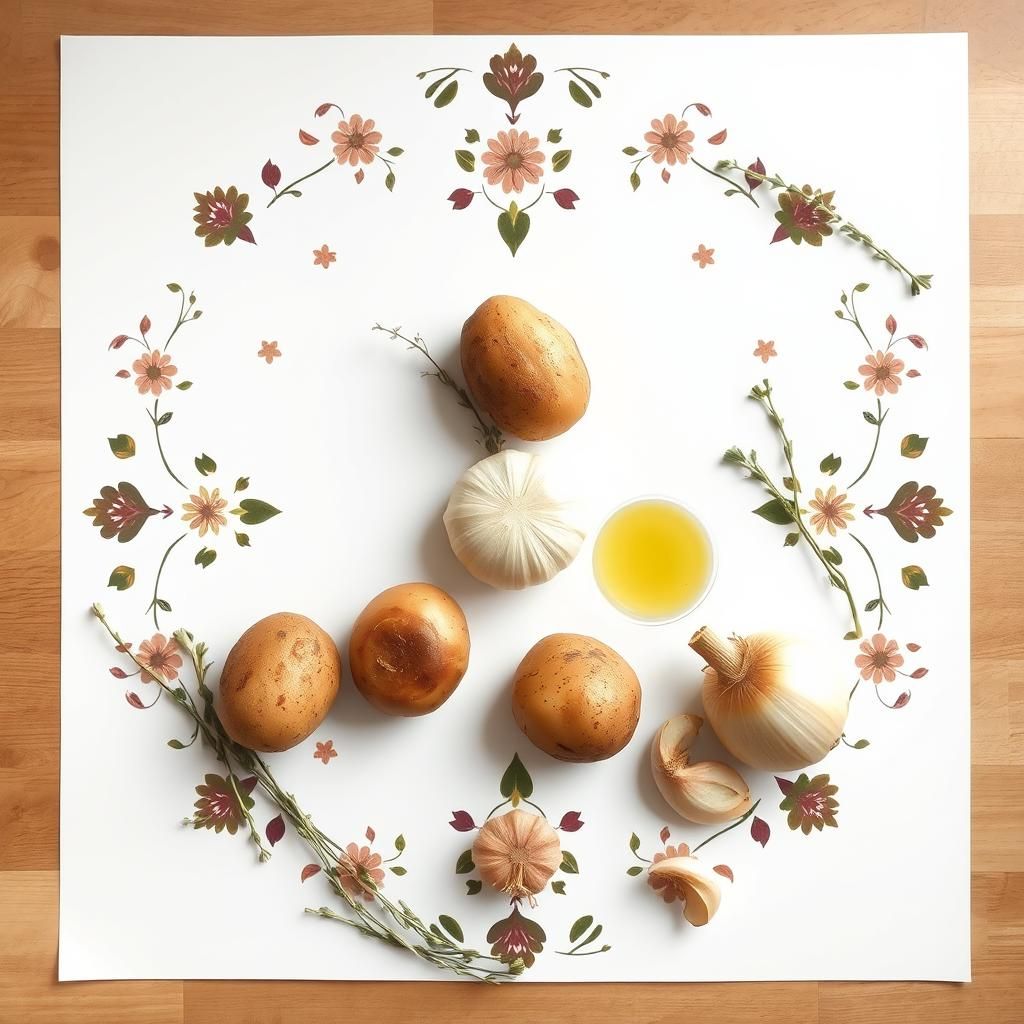
4. Cooking and Nutrient Retention Tips
There’s something comforting about the simple act of cooking vegetables—each sizzle and aroma drifts through the kitchen like a whispered promise of nourishment. Take the humble potato, for example. It’s easy to overdo it, ending up with soggy fries or mushy mash. But here’s a quiet truth: the best way to keep potatoes both hearty and full of nutrients is to treat them kindly and simply. Baking or roasting with the skin on lets the potato keep its fiber and vitamins close, while giving you that warm, earthy flavor that feels like a quiet evening at home. If you’re boiling, resist the urge to chop too small or cook too long—gentle steam helps hold their goodness, and a sprinkle of fresh herbs finishes the story beautifully.
Now, garlic and onion—those kitchen staples that whisper their way into nearly every dish—have their own little secrets for staying fresh and full of flavor. When you mince garlic, adding a touch of olive oil before storing it in a small jar keeps it from drying out and locking in that pungent warmth. And onions? Keep them away from moisture and sunlight, tucked safely in a cool, dry spot. Think of your pantry as a cozy cellar where these pungent bulbs rest, ready to lend their sweet tang to your meals over time. Store your garlic heads loosely, not in plastic bags, and you’ll avoid that frustrating sprouting and softening, holding onto their magic for weeks.
Cooking vegetables is never just about the meal—it’s about preserving the soul they bring to the table, the comfort in every bite, and the subtle, sustaining gift of nature itself. So, slow down, savor the process, and let your kitchen be the warm heart where fresh ingredients meet a careful touch.

5. Storing Vegetables for Maximum Freshness
There’s something deeply satisfying about bringing home a basket full of fresh garlic and onions, their earthy scents promising months of hearty meals ahead. But to keep that promise, it’s all about how you tuck them away.
Garlic and onions are like old friends — they don’t do well with too much fuss, just the right kind of care. The secret to doubling their shelf life? Keep them dry and cool. Find a spot that’s away from the sun’s warm gaze, with plenty of air swirling around. A well-ventilated pantry or a woven basket hanging in a dim corner works wonders. Moisture is the enemy here; it beckons mold and sprouting, dulling both flavor and texture.
Avoid tossing garlic or onions into plastic bags where humidity can build up. Instead, choose containers that breathe — think mesh bags or paper sacks. This simple habit keeps the bulbs firm and full of their rich, punchy flavor for weeks, sometimes months.
And while you’re at it, don’t store garlic and onions side by side. They’re both full of strong scents and can encourage each other to sprout faster. Keeping them apart preserves their essence and life.
As for other vegetables, the same gentle wisdom applies: avoid moisture buildup like the dew on a spring morning. Dampness invites rot and wilting instead of crispness. Use breathable containers whenever possible, and keep your veggies cozy in the crisp, cool temperature range that suits each kind.
Think of your root veggies and leafy greens as guests at a slow, comfortable gathering — they’ll stick around longer and taste better if they’re respected with just the right kind of space and air.
So next time you bring your harvest inside, remember: a cool, dry, airy home is the best place to keep the natural magic alive. It’s an old trick, simple as the crackle of wood in a hearth, but it makes all the difference.
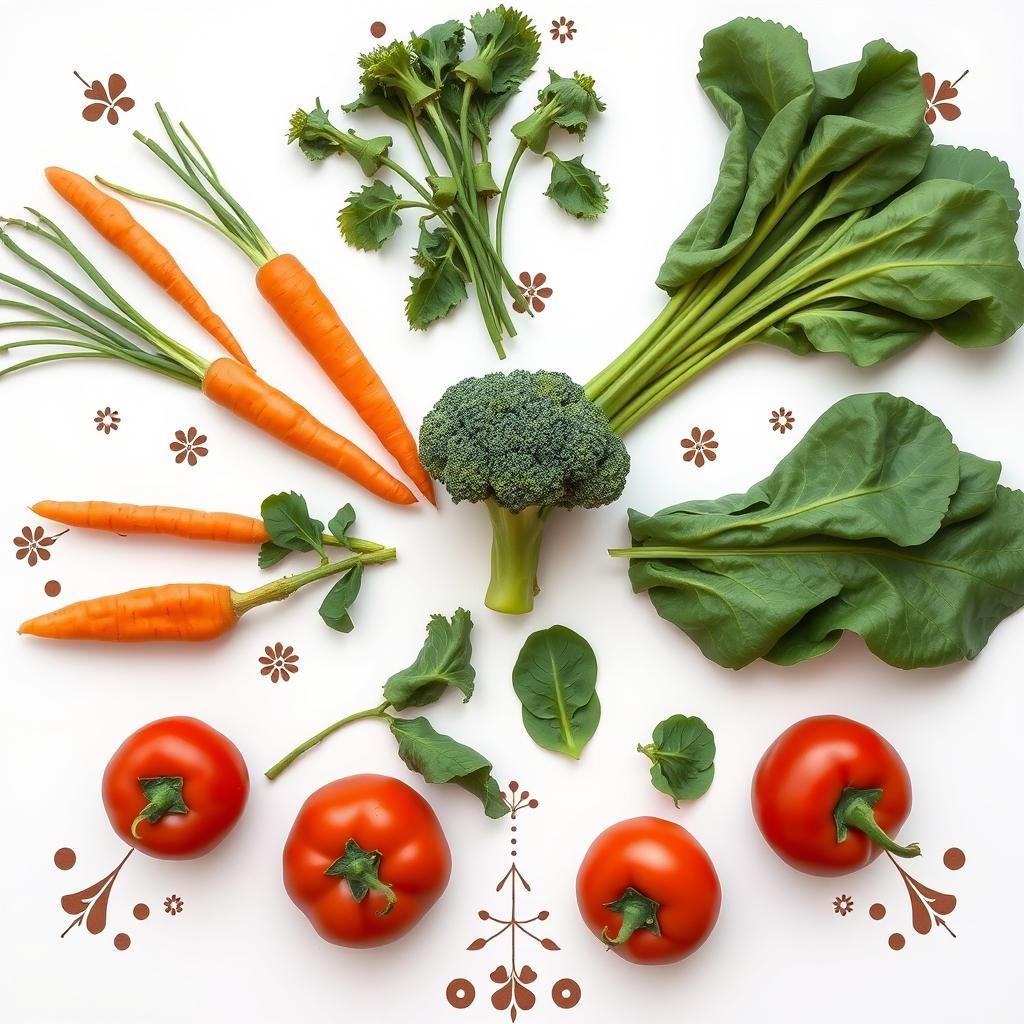
6. Unique Nutritional Insights for Each Vegetable
There’s something quietly remarkable about each vegetable that shows up on our plates—little powerhouses of nutrients, each with its own story to tell. Pull up a chair and let’s explore what makes these garden gems so special, beyond the usual “eat your greens” advice.
Carrot Nutrients and Uses
Carrots are more than just a sweet crunch in your stew; they’re rich in beta-carotene, that lovely pigment your body turns into vitamin A. This vitamin is like a little guardian for your eyesight, helping you see clearly through the dusk and dawn. Beyond eyesight, carrots carry a gentle dose of fiber, which keeps your digestive engine humming smoothly. Pull a carrot from the earth, and you’re tasting a tradition that reminds us of sunny days and the simple joy of fresh harvests. Slice them raw to keep the crunch and nutrition alive—or let them gently simmer to sweeten their natural sugars.
Broccoli’s Protein and Antioxidant Profile
Broccoli isn’t just the humble side dish your grandma pushed on you. It packs a surprising protein punch—more than steak, ounce for ounce—plus a wealth of antioxidants that help your body fend off the daily battles of free radicals. Those little florets, often overlooked, harbor compounds believed to help protect against cancer. Eating them raw or lightly steamed helps preserve this magic, allowing you to gather strength from nature’s own fortress.
Spinach’s Rich Nutritional Value
Spinach has long been a quiet hero at the table, known for its deep green leaves and a load of iron crucial for keeping your blood strong and your energy steady. It’s not just iron, though—spinach packs vitamins A, C, K, plus folate and a bounty of minerals that together support your bones and immune system. Fall harvest brings the best spinach—tender, fresh, and ready to wrap your senses in a crisp, earthy embrace. Adding it raw to salads or lightly sautéed lets you savor both flavor and nutrients.
Pepper and Tomato: Vitamins and Antioxidants
Peppers and tomatoes are summer’s sun-kissed jewels. They burst with vibrant colors and an abundance of vitamin C, which feels like a fresh squeeze of energy for your immune system and skin health. Those red tomatoes hold lycopene, a potent antioxidant, which deepens as they ripen and even more so when cooked slowly in a stew or sauce. Peppers contribute folate and vitamins A and B6, nourishing your heart and nerves gently but surely. Together, they bring warmth, color, and a rich dose of wellness to every meal, linking us to the sun-soaked gardens where they grew.
Each vegetable is a quiet companion in our daily rituals, linking us to earth and season with every bite. Knowing their nourishing stories makes every meal a little sweeter, a little more grounded in the simple, lasting rhythms of nature. So next time you hold a carrot or tear open a head of broccoli, remember: you’re holding a small, humble treasure from the garden, ready to nourish body and soul.
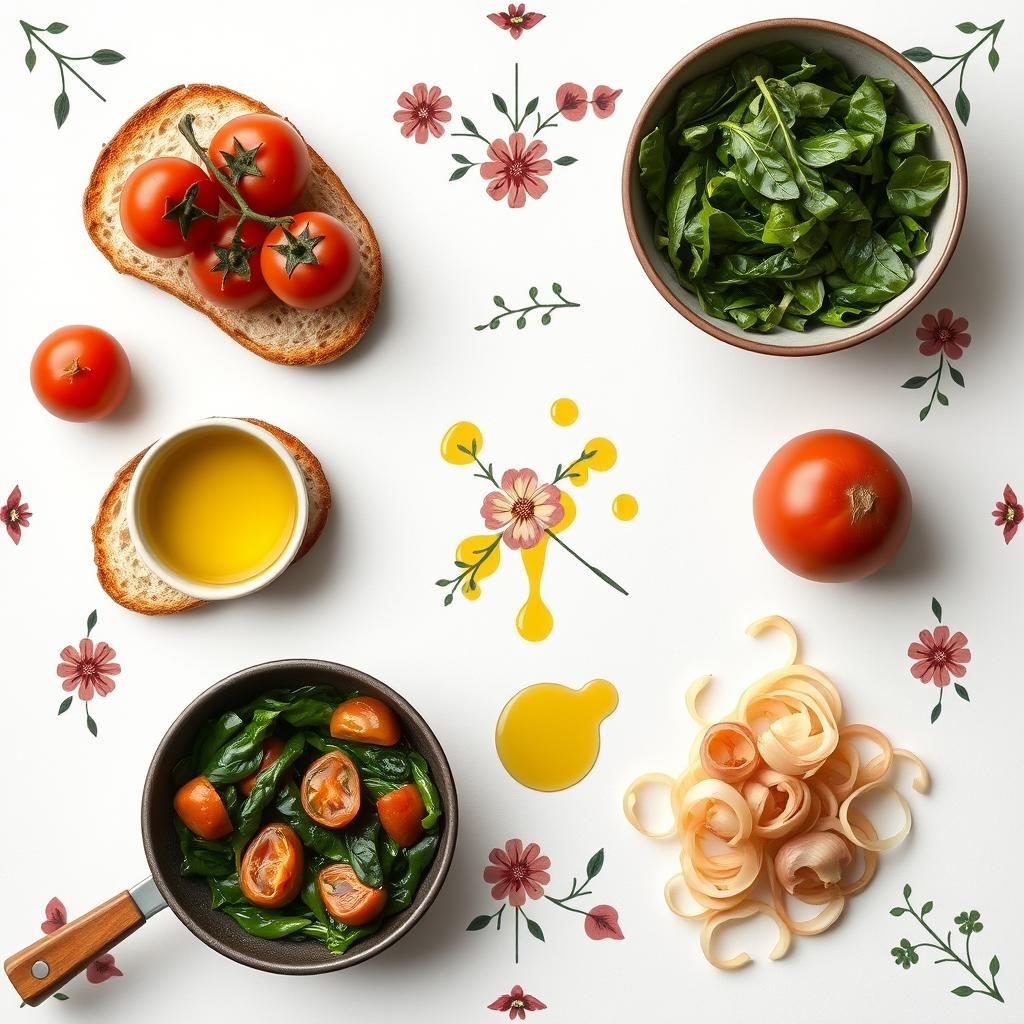
7. Fun and Creative Ways to Enjoy Vegetables
There’s something quietly satisfying about picking fresh tomatoes and spinach straight from the garden, their vibrant colors promising a burst of flavor with every bite. If you haven’t tried tossing garden-fresh tomatoes into a warm slice of crusty bread drizzled with olive oil and sprinkled with sea salt, you’re in for a simple delight. It’s like summer in a bite — juicy, sweet, and just a little tangy, lingering on your tongue long after the last crumb is gone.
Spinach, with its tender leaves, makes an easy companion in many dishes. Wilt a handful gently in a hot pan with a splash of garlic-infused oil, and you have a side dish that’s earthy, nourishing, and humble. It’s a quick way to pack your meal with iron and vitamins, but also a reminder of the slow, patient work of nurturing greens in your own garden patch.
Garlic and onion hold a special place in the kitchen — not just for their bold flavors, but for the warmth and depth they bring to even the simplest dishes. Crushed garlic sizzling in butter, or sweet, caramelized onions patiently cooked low and slow, can transform everyday meals into something comforting and memorable. If you find yourself with a surplus, try slicing onions thinly and pickling them with a pinch of sugar and vinegar; the sharp bite softens, turning them into a lively topper for salads, sandwiches, or roasted vegetables.
Here’s a little tip: when you chop garlic or onion, let it sit for a few minutes before cooking. That brief pause wakes up the flavors and unlocks their health-boosting power — a small ritual that honors both taste and well-being.
These simple ways invite you to slow down, savor the natural gifts of the earth, and find joy in each vegetable’s story — from the soil beneath your hands to the warm glow of your kitchen table. Try them slow, steady, and with a little love, and you’ll find your meals carry not just flavor, but a sense of connection to something older, steadier, and truly nourishing.
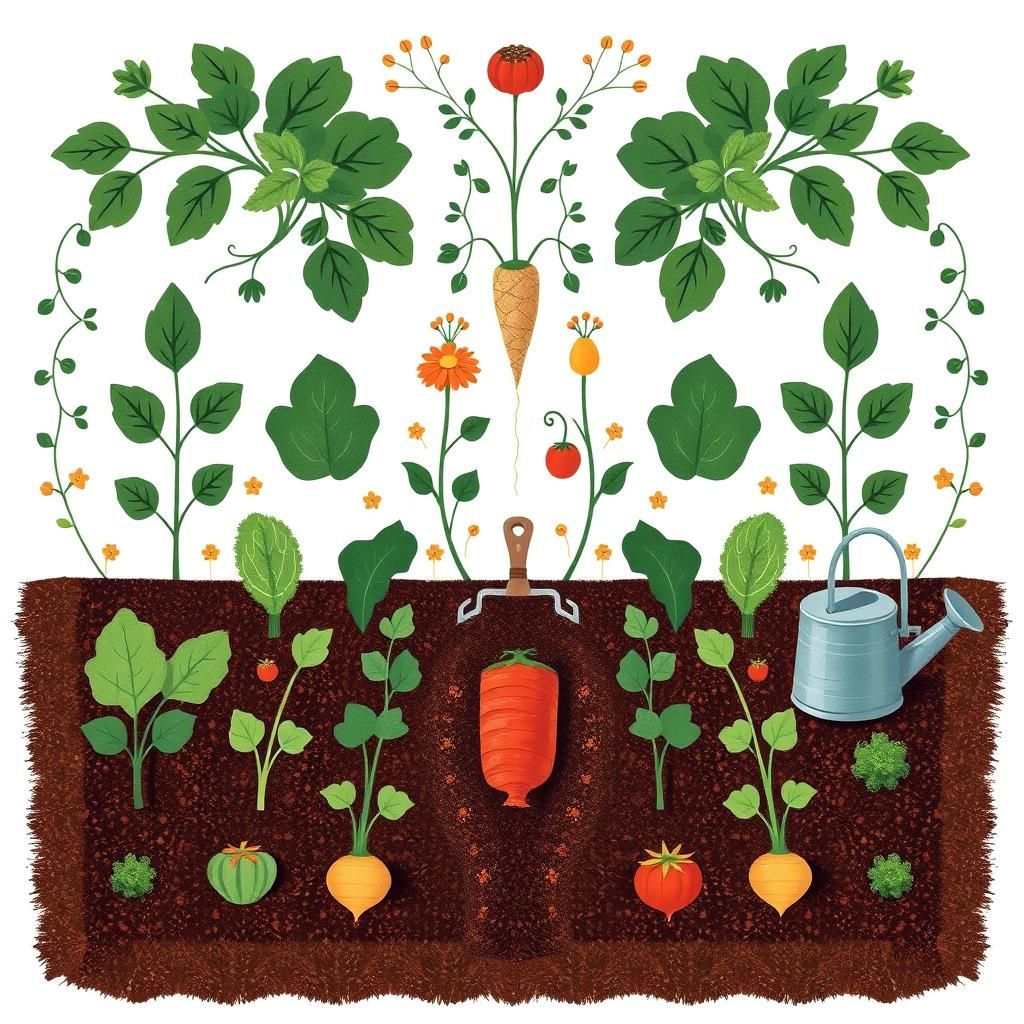
8. Vegetable Gardening for Beginners
There’s something quietly satisfying about planting a seed and watching it grow—just like the slow unfold of a good story told on a porch swing. If you’re new to vegetable gardening, it might seem like a tall order at first, but with some simple guidance, you’ll get those hands a little dirtier and your kitchen fuller of fresh flavors before you know it.
Choosing the Right Vegetables for Your Climate and Space
Start with what makes sense for your patch of earth—or your sunny windowsill if that’s where you’re working. Carrots don’t mind a deeper bed of loose soil, while potatoes are happy tucked into a bin or mound of rich dirt. Spinach is forgiving and quick, perfect for cooler seasons and smaller gardens. Check the local growing season for your area—what thrives in one place might struggle in another, so a little planning saves you frustration and yields sweeter rewards.
Seasonal Tips, Especially for Fall Gardening
Fall is a gentle season for many vegetables, especially leafy greens like spinach. This is the time to sow seeds close together, then thin them out as they sprout—giving each plant enough elbow room to grow strong. Cooler temperatures mean fewer pests, and the soil still holds warmth from summer’s sun, coaxing roots to deepen. Think of it as nature’s soft welcome into gardening, a chance to slow down and enjoy the process without too much fuss.
Essential Tools and Soil Preparation Tips
You don’t need fancy gadgets—just the basics can carry you far: a sturdy trowel, gloves with a bit of wear on them, and a watering can that feels right in your grip. Before planting, turn the soil gently, mixing in some compost if you have it. Compost is garden gold—a little to nourish roots, a little to keep the earth lively. Avoid stepping on freshly turned soil; treat it like a cozy bed your plants will soon call home.
Gardening is a patient kind of joy. It’s less about perfection and more about connection—feeling the soil crumble between your fingers, hearing the quiet growth that doesn’t rush. Whether your garden is a sprawling backyard or a container on the windowsill, every tiny sprout is a step toward something wholesome, delicious, and undeniably yours. So, start small, keep it simple, and let the rhythm of the seasons guide you.
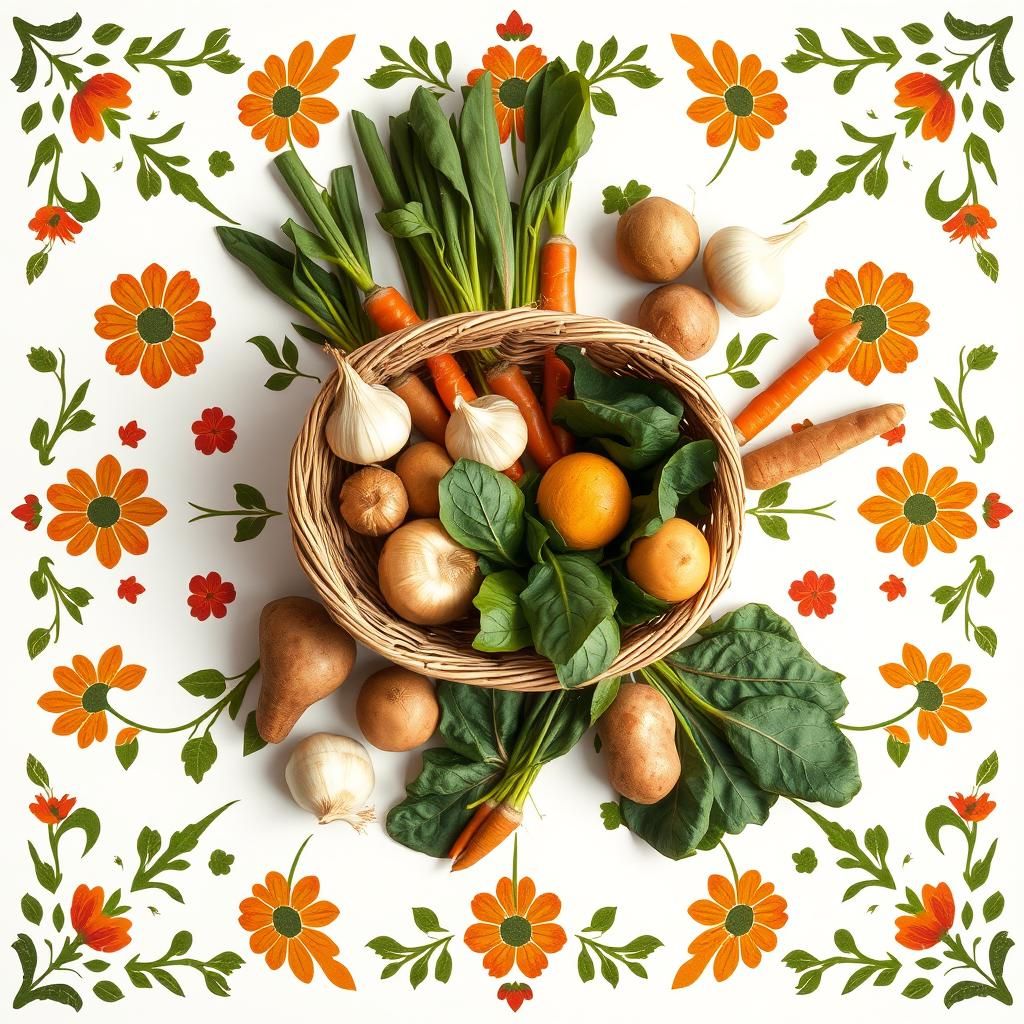
9. Common Myths and FAQs About Vegetables
Let’s gather ‘round the kitchen table and clear up some of those vegetable tales that have been tossed around like an old quilt. Sometimes, what we think we know about our veggies doesn’t quite square with the truth. Here are a few myths to set straight, with a little practical wisdom to guide you.
Myth 1: Carrots improve your eyesight overnight.
You’ve probably heard that munching on carrots will turn you into a night-seeing owl. While they do boast plenty of beta-carotene, which the body turns into vitamin A—a key player in eye health—the magic doesn’t happen instantly. Eating carrots is more like tending to your eyesight garden slowly and steadily, rather than expecting a sudden upgrade. So, go ahead and enjoy them for their crisp sweetness and gentle care to your eyes over time.
Myth 2: Potatoes make you gain weight.
Potatoes often get a bad rap, thought of as the enemy of diets everywhere. The truth is, a plain potato is just a humble tuber, packed with nutrients and fiber that fill you up. It’s what you add—loads of butter, cheese, or drowning it in oil—that tips the scale. The potato itself is sturdy, simple nourishment from the earth, perfect for a balanced plate when prepared simply.
Myth 3: Onions lose all their nutrition when cooked.
Onions are known for their layers, but some think cooking peels away their goodness. Actually, while raw onions hold a punch of vitamin C, cooking sweetens their flavor and brings out other antioxidants. Slow-cooked onions, caramelized to golden softness, aren’t just tastier—they’re still nourishing and easier on the stomach. So don’t hesitate to simmer them low and slow.
Frequently Asked Question: How long can I store garlic and onions at home?
Keep garlic and onions in a cool, dry spot with air circulation—think of a mesh basket tucked in a pantry corner. This simple trick can stretch their shelf life to about two months or more. Avoid refrigeration, as dampness is their enemy, making them sprout or go soft. When garlic cloves start to get papery or onions show soft spots, it’s time to say goodbye, but until then, they hold their hearty flavor and pep.
FAQ: Can I plant spinach in the fall?
Absolutely—and here’s a tip from the shaded garden patch. Spinach loves the cool breath of autumn and can thrive when you overseed, giving it room to spread. Thin the seedlings gently to let the sun reach their tender leaves. Fall spinach is sweet, crisp, and a joy to harvest before winter whispers in.
Untangling these myths and embracing a bit of real talk helps us appreciate vegetables just as they are—simple blessings from the soil, steady and true. So next time you reach for a carrot or peel a potato, know the story behind it and carry that quiet wisdom with you.
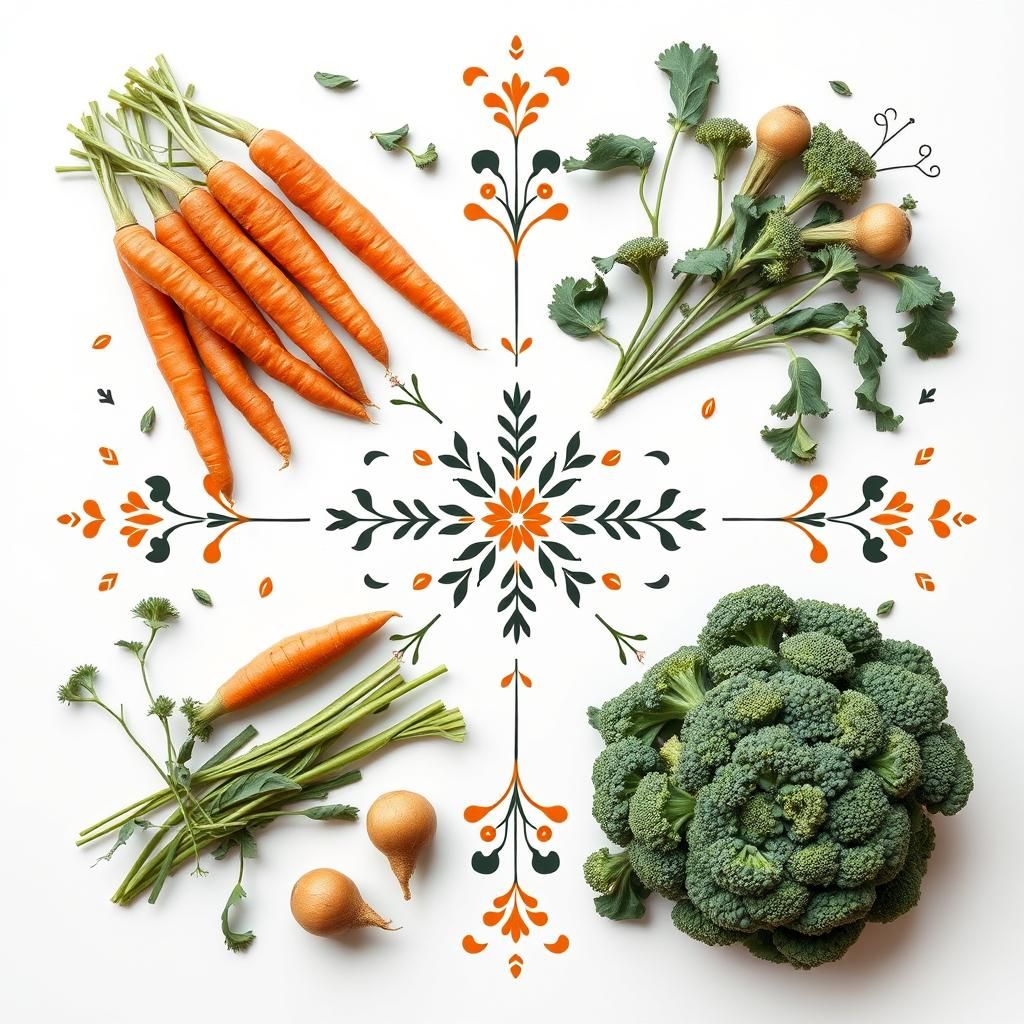
As the sun sets beyond the garden fence, painting the sky in soft oranges and purples, it’s a good time to pause and think about the humble vegetables that nourish our bodies and souls. We’ve taken a slow stroll through fields of facts, health wisdom, and gardening know-how—a gentle reminder that these everyday gifts from the earth are more than just food; they’re small miracles of nature and tradition.
Whether it’s the story of the carrot’s colorful past, the quiet power of broccoli’s protein, or the simple pleasure of peeling a garlic clove, each vegetable brings its own kind of magic. Growing your own patch, even if it’s just a few pots on a windowsill, connects you to the rhythms of the seasons and the satisfaction of watching life unfold under your care. And when you bring those homegrown treasures into the kitchen, you’re not just cooking—you’re weaving a story of health, heritage, and heart.
So here’s a gentle nudge: roll up your sleeves, plant those seeds or pick up that basket at the market, and let vegetables become a little more present in your day. Enjoy their crunch, their colors, the way they mingle in simple meals. Let them remind you that good things, like gardens and friendships, grow slowly with a bit of patience and love.
If you’re curious to keep exploring, there are plenty of places to linger—stories, recipes, and tips waiting just around the corner. For now, take a deep breath, savor the smell of fresh earth and warm bread, and know you’re part of a timeless, healing tradition. Here’s to vegetables—companions on the table and in life’s quiet moments.
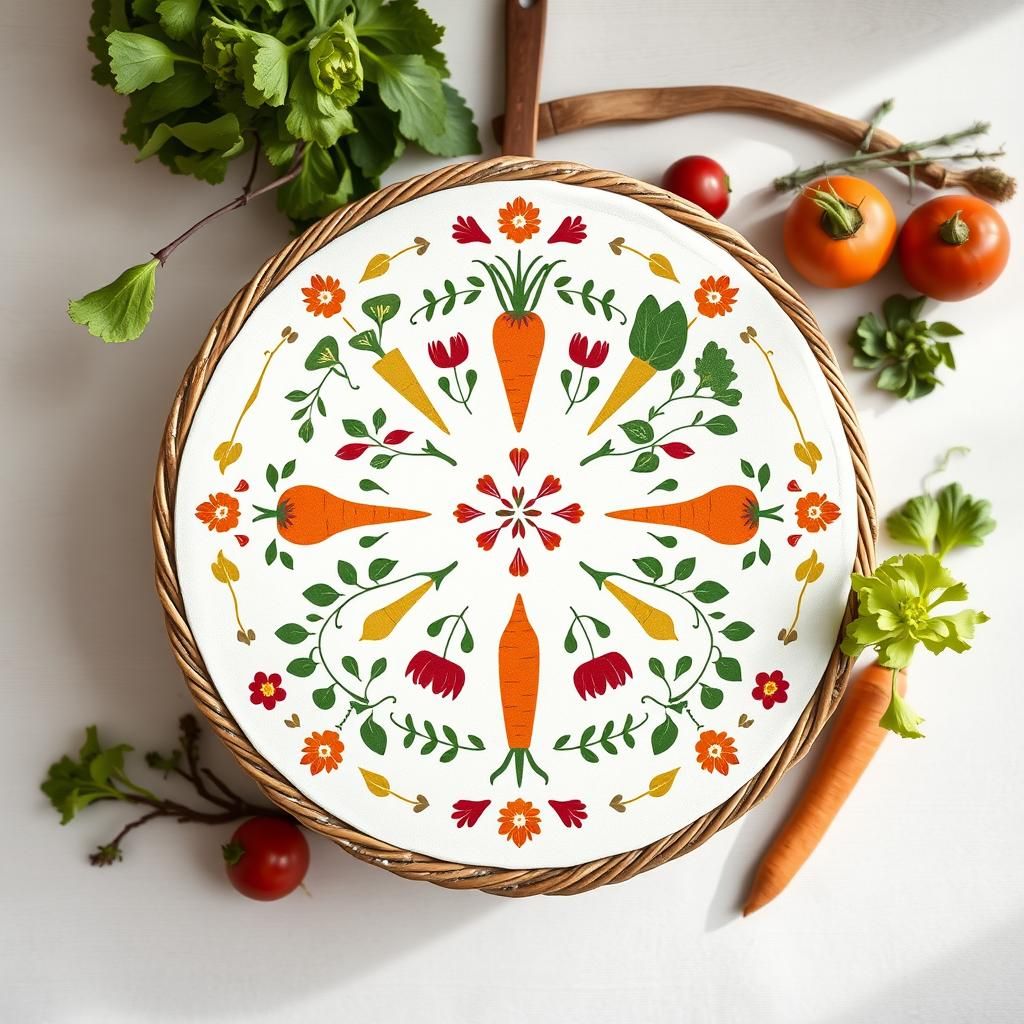
References and Further Reading
Pull up a chair and pour yourself a cup of tea — before we part ways, here’s a cozy little stack of trusted sources for those eager to wander deeper into the world of vegetables. Like an old recipe book passed down through generations, these links hold stories, science, and simple wisdom to nourish your curiosity.
-
For a sprinkle of fun and unexpected tidbits, check out Alphes Corner’s delightful list of vegetable facts. It’s like a garden stroll filled with surprising discoveries: https://alphes-corner.com/2024/08/05/23-fun-facts-about-vegetables/
-
WebMD offers an easy-to-digest slideshow packed with fruit and vegetable fun facts — perfect for a quick break when you need a splash of countryside charm in your day: https://www.webmd.com/food-recipes/ss/slideshow-fun-facts-fruits-vegetables
-
One of the great joys in this journey is community wisdom. The Lead Farmer Facebook group shares heartfelt insights and stories from folks who’ve been dirt-under-the-nails busy growing and living: https://www.facebook.com/groups/leadfarmer73/posts/1400222830170855/
-
Dreaming of a lush fall spinach patch? Creative Vegetable Gardener’s guide is like having a neighbor lean over the fence to offer familiar, tested tips: https://www.creativevegetablegardener.com/fall-spinach/
-
Garlic lovers will appreciate the research-backed health benefits compiled by EatingWell, reminding us why these tiny cloves hold so much power: https://www.eatingwell.com/benefits-of-garlic-8418100
-
Onions, the unsung kitchen heroes, get their due with Real Simple’s deep dive into their many benefits — a comforting read alongside a simmering pot: https://www.realsimple.com/health/nutrition-diet/are-onions-good-for-you
-
For those who savor the humble potato, UC Health shares nutritious recipes and insights that make this simple vegetable a star on the table: https://www.uchealth.org/today/nutritious-marvel-new-recipe-ideas-for-the-tried-and-true-potato/
-
Cleveland Clinic’s overview on cucumbers serves as a refreshing reminder of hydration and more — perfect for hot days and thirsty gardens: https://health.clevelandclinic.org/benefits-of-cucumbers
-
Lose It! highlights the most hydrating vegetables, tying simple choices in your kitchen back to feeling good from the inside out: https://www.loseit.com/articles/the-most-hydrating-vegetables/
-
Cooking potatoes just right can be an art and a science. This newsletter article offers down-to-earth tips to keep your dishes tasty and nutritious: https://www.dvo.com/newsletter/weekly/2015/6-26-924/cooknart8.html
-
Finally, sometimes inspiration strikes in unexpected places — like a quick TikTok video from FoodieFred that shows how joyful and simple cooking with vegetables can be: https://www.tiktok.com/@foodiefred/video/7287563907181366534
Each of these resources is like a hand-woven basket filled with stories and knowledge — a gentle nudge to keep learning, slow down, and roll up your sleeves. Vegetables aren’t just food; they’re a way to connect with the rhythm of nature and the warmth of shared traditions. Happy reading, and even happier growing and tasting!
Share to...
I hope you enjoy the content.
Want to receive our daily crossword puzzle or article? Subscribe!
You may also be interested in
Share to…
Want to receive our daily crossword puzzle?
-
Jigsaw Puzzles
Nordkapp Abstract Art Jigsaw Puzzle 250 | 300 | 500 Pieces
kr 348,00 – kr 439,00Price range: kr 348,00 through kr 439,00 Select options This product has multiple variants. The options may be chosen on the product page -
Jigsaw Puzzles
Majestic Horse Watercolor Jigsaw Puzzle 250 | 300 | 500 Pieces
kr 348,00 – kr 439,00Price range: kr 348,00 through kr 439,00 Select options This product has multiple variants. The options may be chosen on the product page -
Jigsaw Puzzles
Zodiac Ink Art Puzzle: The Playful Monkey 250 | 300 | 500 Pieces
kr 348,00 – kr 439,00Price range: kr 348,00 through kr 439,00 Select options This product has multiple variants. The options may be chosen on the product page

















